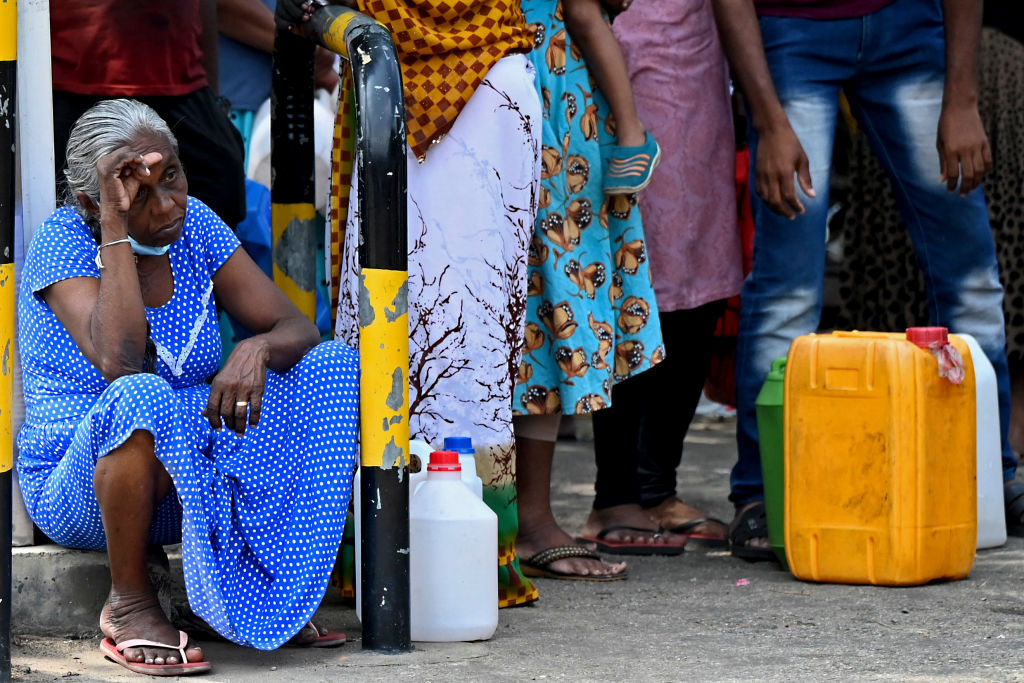
The war in Ukraine has generated an economic tidal wave which is crashing over countries near and far. Among the more far-flung is Sri Lanka, half a world away from the battlefield, where surging food and fuel prices have supercharged a downward spiral that was already underway. Now, the island is being rocked by street protests, and every member of the cabinet—except Prime Minister Mahinda Rajapaksa, the brother of President Gotabaya Rajapaksa—has resigned. To save Sri Lanka from economic collapse and sociopolitical disaster will require radical action.
No credible discussions on a viable strategy to meet the deepening crisis are taking place. So, while escalating protests may bring about a change of government, it’s far from certain that this would lead to improved social or political conditions. Whoever’s in charge, the imperative remains the same: Sri Lanka must address the grave economic crisis it faces, beginning by putting its public finances in order.
There is no time to lose. Finance Minister Ali Sabry, who has been on the job barely a month, says that the country’s foreign-exchange reserves now
stand at less than US$50 million. With
around US$7 billion of the country’s US$51 billion in external debts due this year, a debt moratorium has been put in place. And the
US$600 million the World Bank has given to provide for essential food imports won’t be nearly enough to stop the financial bleeding.
With public coffers all but empty, balance-of-payments pressures mounting and a massive debt overhang looming, the first priority should be a plan to address Sri Lanka’s dire fiscal position, including an effective implementation mechanism. Such a plan must include all the standard consolidation measures, such as eliminating waste and tightening budget management. But, with confidence in public finances depleted and the rupee’s value plummeting, Sri Lanka must also take the more radical step of installing a currency board.
Under such a system, the exchange rate would be set by law, and the central bank would have to be able to cover the entire monetary base with foreign-exchange reserves. By stripping the government of its discretionary power to run big deficits, a currency board would restore credibility to Sri Lanka’s finances relatively quickly. Once established, the board would provide the necessary solutions to Sri Lanka’s economic problems, with a particular focus on stemming the rupee’s decline.
Yes, a currency board is a form of shock therapy. But that is what Sri Lanka’s current crisis demands. And, in fact, because it can be installed immediately, and requires no immediate reforms affecting public budgets, state assets or trade, a currency board amounts to faster-acting and more effective medicine than the long dose of austerity that is often proposed.
The record speaks for itself. The most widely acclaimed modern currency board was established in Hong Kong in 1983. But examples of successful currency boards abound. In fact, in the more than 50 countries where currency boards have been installed, they have always succeeded at restoring confidence in public finances and the national currency.
In 1992, Estonia established its currency board in record time—just 30 days—to support the transition from the Russian rouble to the new kroon after independence. Its success inspired Lithuania, another former Soviet state, to establish a currency board in 1994. Lithuania—a country that I represent in Sri Lanka as an honorary consul—has been praised by the International Monetary Fund for its economic transformation, in which the currency board played a central role.
In Bulgaria, a currency board stopped a bout of hyperinflation in its tracks in 1997. The country quickly turned its fiscal deficit into a surplus and tripled its foreign-exchange reserves. Today, it boasts among the lowest
debt-to-GDP ratios in the European Union.
Critics argue that currency boards are suitable only for small countries, and that a weak banking system will reduce its impact. But none of this would preclude a currency board in Sri Lanka. We are an island of 23 million people, and there are no weak banks now in operation in our country.
Former prime minister Ranil Wickremesinghe, with whom I have discussed this proposal, believes that a version of a currency board should be incorporated within the central bank, rather than as an independent entity. But the Central Bank of Sri Lanka’s problematic past performance, including its history of politicisation, makes this suggestion a non-starter, despite the increased credibility and international goodwill brought by its new governor, P. Nandalal Weerasinghe. In any case, a currency board is a very different creature from a central bank, because of its strictly limited functions.
Upended by crisis, Sri Lanka must finally face its financial demons head-on. It will be a difficult fight. But a currency board—which strips the government and the central bank of the opportunity to mismanage the budget and the exchange rate, thereby restoring the credibility of our economic governance—vastly improves Sri Lanka’s chances of winning.
 Print This Post
Print This Post